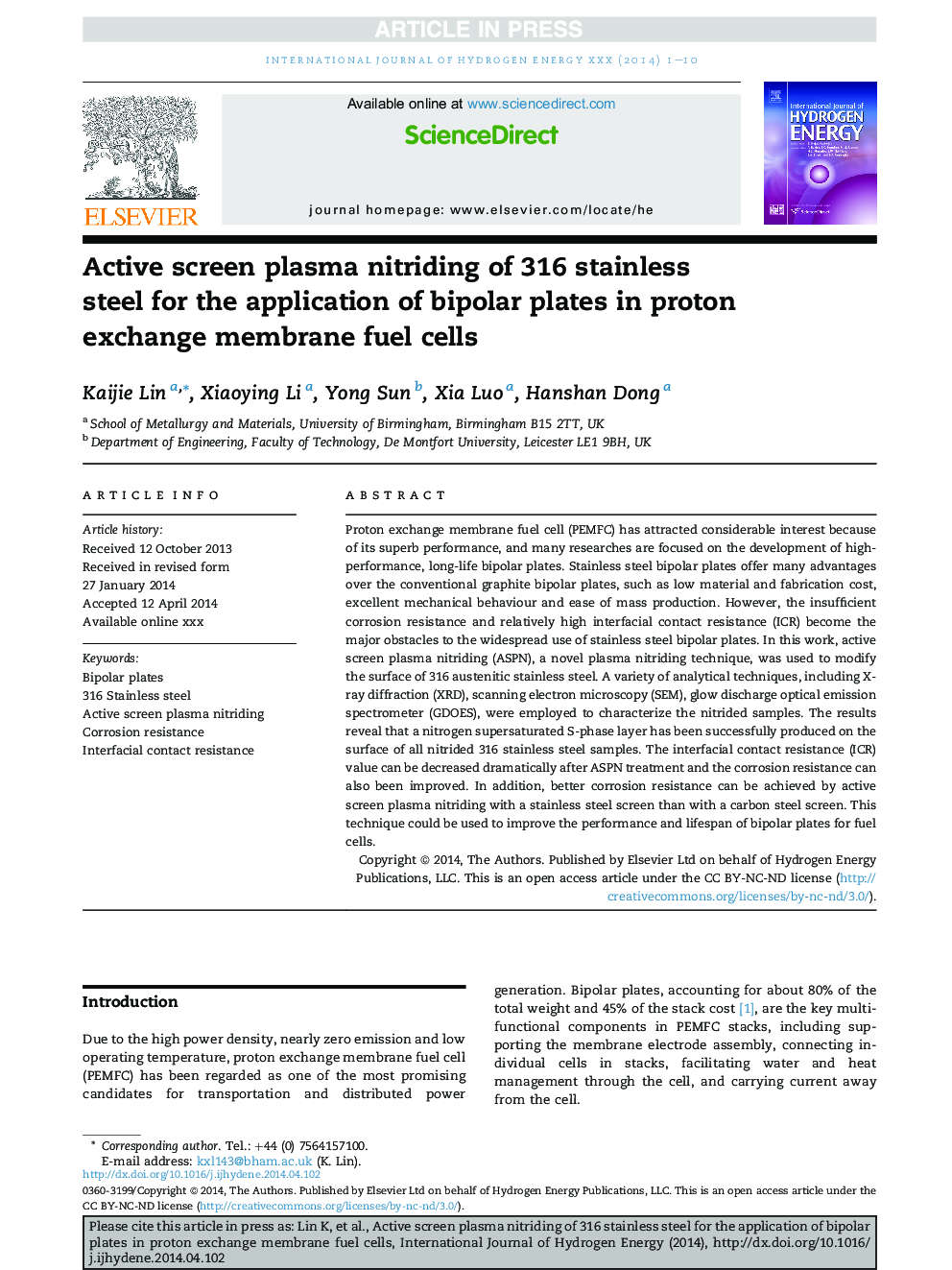| Article ID | Journal | Published Year | Pages | File Type |
|---|---|---|---|---|
| 7717153 | International Journal of Hydrogen Energy | 2014 | 10 Pages |
Abstract
Proton exchange membrane fuel cell (PEMFC) has attracted considerable interest because of its superb performance, and many researches are focused on the development of high-performance, long-life bipolar plates. Stainless steel bipolar plates offer many advantages over the conventional graphite bipolar plates, such as low material and fabrication cost, excellent mechanical behaviour and ease of mass production. However, the insufficient corrosion resistance and relatively high interfacial contact resistance (ICR) become the major obstacles to the widespread use of stainless steel bipolar plates. In this work, active screen plasma nitriding (ASPN), a novel plasma nitriding technique, was used to modify the surface of 316 austenitic stainless steel. A variety of analytical techniques, including X-ray diffraction (XRD), scanning electron microscopy (SEM), glow discharge optical emission spectrometer (GDOES), were employed to characterize the nitrided samples. The results reveal that a nitrogen supersaturated S-phase layer has been successfully produced on the surface of all nitrided 316 stainless steel samples. The interfacial contact resistance (ICR) value can be decreased dramatically after ASPN treatment and the corrosion resistance can also been improved. In addition, better corrosion resistance can be achieved by active screen plasma nitriding with a stainless steel screen than with a carbon steel screen. This technique could be used to improve the performance and lifespan of bipolar plates for fuel cells.
Keywords
Related Topics
Physical Sciences and Engineering
Chemistry
Electrochemistry
Authors
Kaijie Lin, Xiaoying Li, Yong Sun, Xia Luo, Hanshan Dong,
